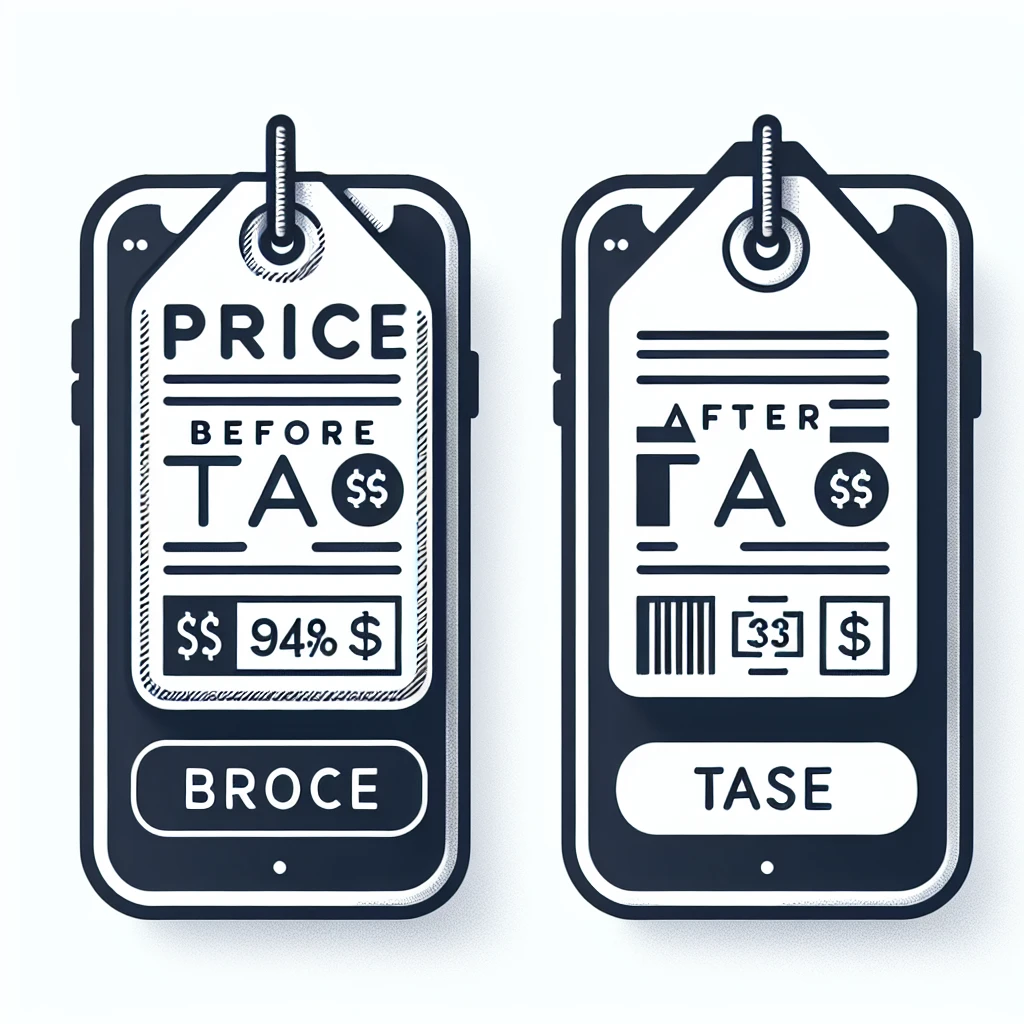Understanding Tax-Inclusive Pricing
When it comes to ecommerce, pricing strategy is not just about numbers; it's a subtle art that blends customer psychology with financial savvy. A key element in this mix is tax-inclusive pricing, which, as the term suggests, means that the price displayed to customers includes all taxes. This method can simplify the shopping experience by providing transparency, avoiding the sticker shock that can occur when taxes are added at checkout.
But there's more to tax-inclusive pricing than just customer experience. From an accounting perspective, this approach requires a thorough understanding of the tax rates applicable to your products and the regions you sell in. It's a balancing act; you must ensure compliance while also maintaining competitive pricing. Integrating tax-inclusive pricing into your strategy means considering factors such as:
- The varying VAT/GST rates across different jurisdictions.
- How tax-inclusive pricing may affect your displayed prices compared to competitors who may list prices without tax.
- The potential impact on your profit margins and the importance of precise calculations to avoid over or undercharging.
Ultimately, tax-inclusive pricing is not just about compliance; it's a strategic tool that, when used effectively, can enhance trust and clarity in your ecommerce business. By embedding taxes into your price tags, you can create a smoother path to purchase, potentially reducing cart abandonment and fostering a more straightforward, no-surprises relationship with your customers.

VAT/GST Considerations in Pricing
As we delve deeper into the complexities of VAT/GST considerations in pricing, it's vital for ecommerce businesses to recognize that this is not just a compliance issue, but a strategic one that can significantly impact profitability and customer perception. Here are some nuanced factors to consider:
- Regional Variations: VAT/GST rates are not uniform and can vary widely from country to country, and sometimes within regions of the same country. This variation demands a dynamic pricing strategy that can accommodate these differences, especially for businesses selling cross-border. It's crucial to stay informed about the global VAT/GST rates and adjust your prices accordingly to maintain a competitive edge.
- Price Perception: In markets where tax-inclusive pricing is the norm, consumers may perceive prices as higher if they're not accustomed to seeing the tax broken out. This requires a delicate balance between transparency and competitive pricing. Your pricing strategy should account for how the inclusion of VAT/GST will affect the customer's perception of your product's value.
- Margin Management: Including VAT/GST in your prices means you need to carefully calculate the tax's impact on your profit margins. A miscalculation can lead to undercharging, which eats into profits, or overcharging, which can drive customers away. Effective margin management is essential, and sometimes this may involve absorbing part of the tax to avoid pricing yourself out of the market.
- Discounts and Promotions: When running promotions or offering discounts, the VAT/GST still needs to be accounted for based on the original price of the product. This can complicate promotional pricing strategies, as the tax amount may reduce the effectiveness of the discount from a profitability standpoint.
- Technology Integration: Leveraging technology for accurate VAT/GST management is key. Automated systems can help ensure that you're charging the correct tax rates and maintaining compliance. This is where tools like VAT/GST management software become invaluable, allowing you to focus on other aspects of your business while handling the intricacies of tax calculation.
In conclusion, VAT/GST considerations in pricing are multifaceted and require a comprehensive approach. Ecommerce businesses must be agile, informed, and strategic to navigate this landscape successfully. By understanding and integrating these tax considerations into your pricing strategies, you can ensure that your ecommerce venture remains competitive, compliant, and profitable in a VAT/GST-regulated market.
Competitive Pricing in a VAT/GST Environment
When it comes to maintaining competitive pricing in a VAT/GST environment, ecommerce businesses face a unique set of challenges. The key is to strike a balance between absorbing the additional costs and passing them on to the customer without compromising on competitiveness or profitability. Here are some strategies that can help:
- Cost Analysis: Begin with a thorough analysis of your cost structure. Understand the impact of VAT/GST on your overall costs and determine how much of it can be absorbed. This may involve renegotiating with suppliers or finding cost savings in other areas of your business to offset the tax expense.
- Price Adjustment: Consider a slight increase in your prices to cover the VAT/GST, but do so judiciously. The increase should be minimal to avoid deterring customers. It's a delicate dance of numbers where customer psychology plays a significant role. Keep a close eye on competitors' pricing and ensure your adjustments are in line with market expectations.
- Value Addition: Enhance the perceived value of your products to justify any price increase. This could be through improved product quality, better customer service, or additional features. Customers are more likely to accept a higher price if they perceive they are getting more value for their money.
- Transparent Communication: Be upfront with your customers about VAT/GST inclusion in your prices. Educate them on why prices have changed, and assure them that you are committed to providing the best value. Transparency can build trust and loyalty, which are crucial for long-term customer relationships.
- Dynamic Pricing: Implement dynamic pricing strategies that allow for flexibility in response to market changes, competitor pricing, and cost fluctuations. Tools and software that support real-time pricing adjustments can be invaluable in staying competitive. Referencing an article on leveraging technology for VAT/GST management can offer insights into how technology can aid in this aspect.
Incorporating these strategies requires a deep understanding of both your market and your customers. It's not just about the numbers; it's about perception, value, and trust. By approaching VAT/GST as an opportunity to refine your pricing strategy rather than a hurdle, you can turn a potential disadvantage into a competitive edge. Remember, in the world of ecommerce, agility and informed decision-making are the keys to success.







